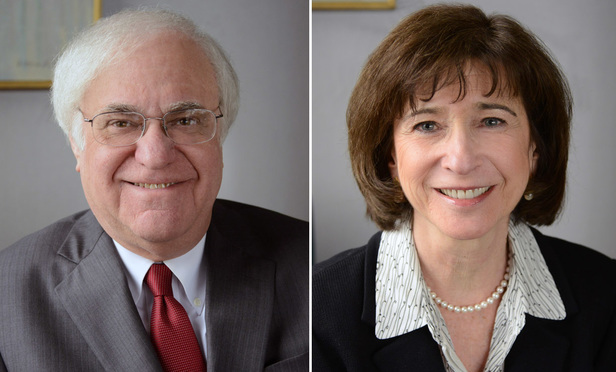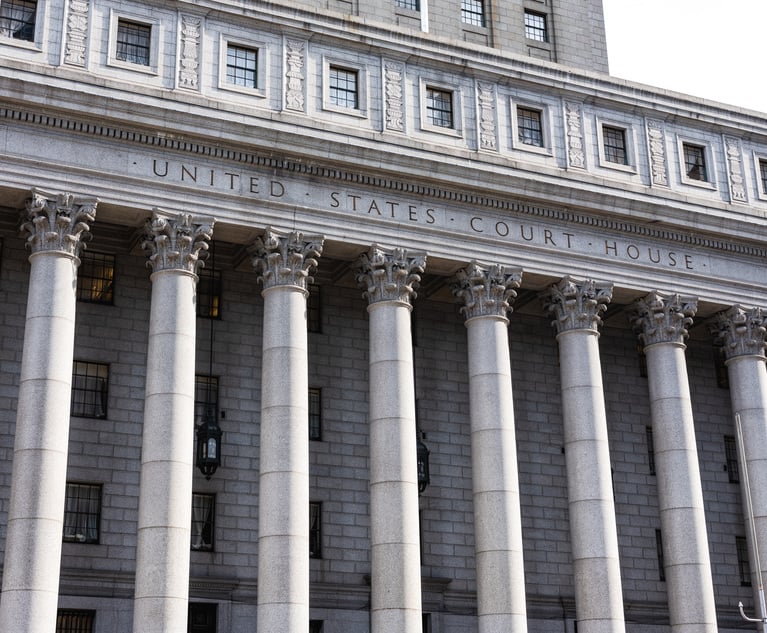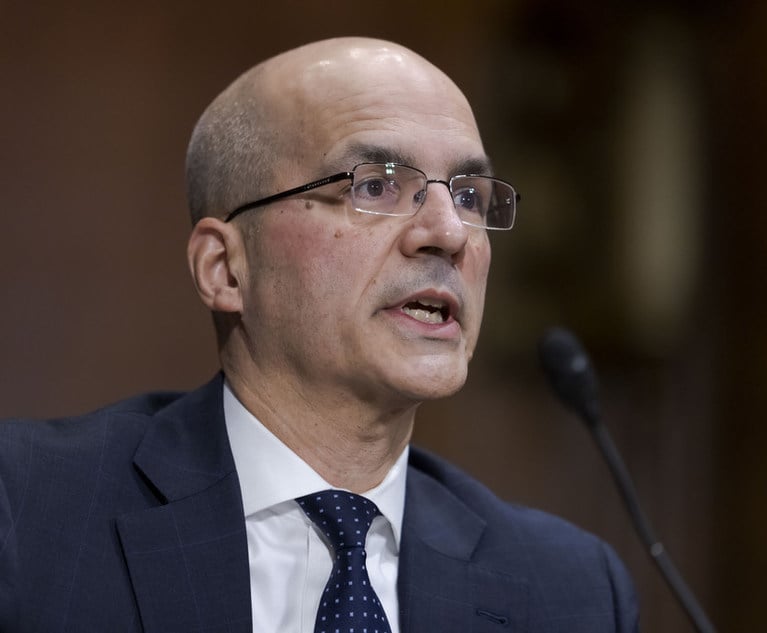Resolving Tort Litigation in the Age of COVID-19
In their Trial Practice column, Robert Kelner and Gail Kelner discuss the expanding use of electronic filing and videoconferencing, pretrial and post-trial proceedings and appeals via Zoom or Skype.
July 27, 2020 at 11:48 AM
12 minute read
 Robert S. Kelner and Gail S. Kelner
Robert S. Kelner and Gail S. Kelner
We are all clearly heartened by the renewed activity in our judicial system after the nearly complete shutdown necessitated by the onslaught of the coronavirus. Now with the expanding use of electronic filing and videoconferencing, pretrial and post-trial proceedings and appeals are back in action. It is such a relief to once again see our judges and their court staff and our colleagues, albeit via Zoom or Skype, and not in person. It is especially wonderful that our court system has put human safety first in its operations but adapted the system to move forward.
Although social distancing and safety can be maintained in conference and IAS parts by the liberal use of videoconferencing and careful scheduling of any in-court meetings, there remains a significant problem which will require more creative thinking. Jury trials have been on hold because of the obstacles presented to guarantee the safety of jurors and trial participants where distancing is imperative but very difficult to implement properly. Many judges have opined that regular jury trials will not commence until some undefined time not in the near future. So the issue remains how to handle personal injury cases which are trial ready and on a jury calendar. CPLR §4101 provides that, unless waived, issues of fact shall be tried by a jury in "an action in which a party demands and sets forth facts which would permit a judgment for a sum of money only. "CPLR 4102 states in pertinent part: "(a) Demand. Any party may demand a trial by jury of any issue of fact triable of right by a jury, by serving upon all other parties and filing a note of issue containing a demand for trial by jury." It is obvious that civil jury trials in the current environment would be dangerous, even with the greatest precautions. Jury rooms with dozens of people in close quarters, with masks or not, should not be considered at this time. Yet there are cases awaiting trial.
Not all trial-ready cases are the same. There are those which await trial on liability and damages and those which await trial on damages only. As a result of the decision of the Court of Appeals in Rodriguez v. City of New York, 31 N.Y.3d 312 (2018), there may be an increase in the number of trial ready cases where liability has already been determined against one or more defendants, and the action is on the trial calendar for a jury trial on damages and possibly comparative negligence only. As a result of the imposition of liability, interest has been running since the date of the liability judgment. It may be assumed that defendants will be less sanguine about letting such cases languish. This factor is certainly an incentive for a defendant to be more open to resolving that case than one where both liability and damages are unresolved. The flip side is that where a trial is necessary on all issues, a defendant may seek a bargain resolution where there is a perception that a plaintiff is anxious to resolve his or her case with no trial in sight. Plaintiffs attorneys should consider Rodriguez motions for summary judgment, as favorable decisions may result in the settlement of cases that might not soon resolve.
Even under the best of circumstances, the route to a jury trial is longer and filled with more delays than a judge-only bench trial. However, the jury trial is still perceived as the most desirable forum in most personal injury actions, with the benefit of the collective wisdom of a jury assessing credibility and factual issues.
However, under current circumstances, a bench trial, with the judge as the trier of fact and law, as in the Court of Claims, is becoming one of the options to move cases and lessen the ever increasing backlog. Obviously, both sides would have to waive the right to a jury trial. With a bench trial, the judge becomes the sole arbiter of credibility, facts and law. Although there is an appeal from a bench trial decision and the appellate court is free to freshly review all the evidence, it will generally defer to the judge on credibility of the witness issues. For example, in Fernandez v. State of New York, 130A.D.3d 566 (2nd Dept. 2015), the appellate court deferred to the trial court's assessment of claimant's version of the manner in which the accident occurred. It noted:
In reviewing a determination made after a nonjury trial, the power of the Appellate Division is as broad as that of the trial court, and this court may render the judgment it finds "warranted by the facts," bearing in mind that in a close case, the trial judge had the advantage of seeing the witnesses …
In affirming the trial court's dismissal of the claim, the court held:
Where the trial court's findings of fact "'rest in large measure on considerations relating to the credibility of witnesses[,]' deference is owed to the trial court's credibility determinations"
Similarly, in an appeal from a nonjury trial in Martin v Fitzpatrick, 19 A.D.3d 954, 957 (3d Dept. 2005), the court stated:
On our review of a verdict after a bench trial, we independently review the weight of the evidence and may grant the judgment warranted by the record, while according due deference to the trial judge's factual findings particularly where, as here, they rest largely upon credibility assessments
See also Pappas v Liapes, 138 A.D.3d 943 (2d Dept. 2016) and Lawson-Groome v Smalls, 144 A.D.3d 633(2d Dept. 2016) where the appellate court similarly acknowledged the scope of its appellate view but accorded deference to the trial court's assessment of credibility.
There are clearly pros and cons to bench trials. It is unlikely that a judge will be inflamed by either provocative evidence or extreme emotion to the extent that a jury might. The judge alone will be the one to make credibility determinations. On the other hand, it will be an expedited trial. Most trial lawyers will feel "safer" with a jury than with a bench trial.
It is quite interesting that the city of New York has announced its willingness to participate in a pilot program to try to move cases by engaging in bench trials. Judge Mitchell Danziger announced in a memorandum very recently that, on a case by case basis, the City of New York, in Bronx County, would be willing to participate in bench trials. The city's form stipulation seeks a cap on damages which will be negotiated between the parties and which will not be disclosed to the judge. However, as proposed by the city, it is not a negotiated high-low agreement, as there will be no "low," thus allowing for the possibility that there may be no recovery if the judge finds against the plaintiff on either liability or damages. Each party reserves its right to appeal, and Article 16 and GOL 15-108 are fully applicable. Liens and other obligations remain the responsibility of the plaintiff.
The stipulation that would be required does allow for bench trials on the issue of damages only, but does not provide for a minimum figure that plaintiff would receive. Thus, the bench trial would have a limit on the high, but no low for an award. There is a ceiling but no floor. Plaintiffs have no "safety net."
The details released so far are silent as to whether there would be an assigned part for these bench trials, an assigned judge, or whether judges would be assigned at random, in a manner more akin to a judge being designated to preside over a jury trial. Not raised is the potential to agree upon a judge acceptable to all sides. Critical to both sides would be finding a judge that would be acceptable to all litigants.
Clearly the city, in its form stipulation, has protected itself well, and the attractiveness of a bench trial to a plaintiff will depend not only upon on how high the cap on damages would be, but plaintiff's willingness to take a risk with the lack of a stipulated low. This type of arrangement would certainly be more complex when there are additional defendants, as they would also have to agree to this structure for a bench trial and any cap would have to be disclosed to all parties to avoid an impermissible secret agreement with any one party.
Danziger's memo indicates that the purpose of this program is not to eliminate or suppress settlements, And, it is possible that a number of cases may end up being settled during discussions. The desirability to plaintiffs for a bench trial with these terms may very much depend on whether it will be sensible to give up a Bronx jury in an effort to conclude a case, rather than to wait for the uncertain advent of trials again. The risks to plaintiffs will be much greater in complex severe injury cases than in cases where the potential recovery for damages may be lower. Even though this city pilot initiative is not perfect, it is certainly an opportune starting point to arrive at a way to move cases. A more balanced approach would be the more conventional high-low agreements, which offer protection to the plaintiff as well as the defendant, but that is not the language in the city's proposed stipulation.
The nature of high-low agreements was discussed in Cunha v Shapiro, 42 A.D.3d 95 (2d Dept. 2007) and the analysis is instructive. The court found that a high-low agreement, when triggered, constitutes a voluntary settlement of an action and should be treated like any other settlement for CPLR purposes, including application of the payment, judgment, and interest provisions of CPLR 5003–a, unless the provisions of the statute were expressly exempted from the stipulated terms of the high-low agreement. The court in Cunha stated :
New York has "long favored and encouraged the fashioning of stipulations as a means of expediting and simplifying the resolution of disputes" (Mitchell v. New York Hosp., 61 N.Y.2d 208, 215, 473 N.Y.S.2d 148, 461 N.E.2d 285). In this regard, high-low agreements are generally favored by courts, attorneys, and litigants as they assure a minimally-acceptable recovery to plaintiffs in the event of an unexpectedly small verdict or a defense verdict, while protecting defendants against runaway verdicts …
The court further noted that a high-low agreement is a conditional settlement:
A high-low agreement, when initially reached by the parties in a litigation, is, in fact, a conditional settlement. The condition of the agreement is that the jury render a verdict that falls outside the range of the high-low agreement. When a verdict is rendered outside of the agreed-upon range, the condition is triggered and the "high" or the "low" becomes binding upon the parties as a settlement. By contrast, when a jury renders a verdict within the range of the high-low agreement, the condition is not met and the high-low agreement is rendered academic.
In Matter of In re Eighth Judicial District Asbestos Litigation, 8 N.Y.3d 717, 721 (2007), in commenting upon a high-low agreement entered into between a plaintiff and a defendant in a single-defendant trial, the Court of Appeals observed that such agreements were a means of controlling risk but noted the dangers in multi-defendant litigation, stating:
[T]he high-low agreement affords the parties a means of tempering the significant risks associated with proceeding to trial. In a multi-defendant litigation, however, a high-low agreement between a plaintiff and fewer than all defendants has the potential of prejudicing the rights of the nonagreeing defendant if all parties are not apprised of the agreement's existence. Indeed, courts and commentators alike have acknowledged that secretive agreements may result in prejudice to the nonagreeing defendant at trial, distort the true adversarial nature of the litigation process, and cast a cloud over the judicial system.
A high-low agreement on damages need not preclude an appeal on liability. For example, in Doubrovinskaya v Dembitzer, 77 A.D.3d 609 (2d Dept. 2010), the high-low agreement between the parties did not prohibit the plaintiff from making a postverdict motion or prevent plaintiff from moving to set aside the jury verdict on the issue of liability in favor of motorist.
Mediation is clearly another way to resolve cases during this time where there is not an imminent jury option. The parties may benefit from a mediator with whom all are comfortable who may assist in the settlement process. More time may be spent on the process by a mediator than might be possible with a judge with a substantial caseload. The negative is that it is an expensive process that may not move the case along.
Perhaps the least attractive alternative is arbitration. Although this process is mandated in certain cases, notably no fault and underinsurance disputes, it may not be the best solution for settling personal injury actions. Court review of an arbitration award is very limited under CPLR Article 75. In the past, arbitrations were very rarely employed as a preferred method to resolve cases.
It is possible that pilot programs of the type announced by Danziger, or one with modifications, may begin in other courts. What is desirable about the city of New York pilot program is that it will be employed on a case by case basis at the option of both parties, and is not mandatory.
Perhaps most critical is that never should there be a replacement on a permanent basis of jury trials by bench trials. Bench trials should be viewed as a temporary "fix" during the pandemic, and not as the death of trial by jury.
Robert S. Kelner is senior partner at Kelner and Kelner. Gail S. Kelner is an attorney with the firm.
This content has been archived. It is available through our partners, LexisNexis® and Bloomberg Law.
To view this content, please continue to their sites.
Not a Lexis Subscriber?
Subscribe Now
Not a Bloomberg Law Subscriber?
Subscribe Now
NOT FOR REPRINT
© 2025 ALM Global, LLC, All Rights Reserved. Request academic re-use from www.copyright.com. All other uses, submit a request to [email protected]. For more information visit Asset & Logo Licensing.
You Might Like
View All
Decision of the Day: Qui Tam Relators Do Not Plausibly Claim Firm Avoided Tax Obligations Through Visa Applications, Circuit Finds

'Serious Legal Errors'?: Rival League May Appeal Following Dismissal of Soccer Antitrust Case
6 minute read
Decision of the Day: Judge Sanctions Attorney for 'Frivolously' Claiming All Nine Personal Injury Categories in Motor Vehicle Case

Trending Stories
Who Got The Work
J. Brugh Lower of Gibbons has entered an appearance for industrial equipment supplier Devco Corporation in a pending trademark infringement lawsuit. The suit, accusing the defendant of selling knock-off Graco products, was filed Dec. 18 in New Jersey District Court by Rivkin Radler on behalf of Graco Inc. and Graco Minnesota. The case, assigned to U.S. District Judge Zahid N. Quraishi, is 3:24-cv-11294, Graco Inc. et al v. Devco Corporation.
Who Got The Work
Rebecca Maller-Stein and Kent A. Yalowitz of Arnold & Porter Kaye Scholer have entered their appearances for Hanaco Venture Capital and its executives, Lior Prosor and David Frankel, in a pending securities lawsuit. The action, filed on Dec. 24 in New York Southern District Court by Zell, Aron & Co. on behalf of Goldeneye Advisors, accuses the defendants of negligently and fraudulently managing the plaintiff's $1 million investment. The case, assigned to U.S. District Judge Vernon S. Broderick, is 1:24-cv-09918, Goldeneye Advisors, LLC v. Hanaco Venture Capital, Ltd. et al.
Who Got The Work
Attorneys from A&O Shearman has stepped in as defense counsel for Toronto-Dominion Bank and other defendants in a pending securities class action. The suit, filed Dec. 11 in New York Southern District Court by Bleichmar Fonti & Auld, accuses the defendants of concealing the bank's 'pervasive' deficiencies in regards to its compliance with the Bank Secrecy Act and the quality of its anti-money laundering controls. The case, assigned to U.S. District Judge Arun Subramanian, is 1:24-cv-09445, Gonzalez v. The Toronto-Dominion Bank et al.
Who Got The Work
Crown Castle International, a Pennsylvania company providing shared communications infrastructure, has turned to Luke D. Wolf of Gordon Rees Scully Mansukhani to fend off a pending breach-of-contract lawsuit. The court action, filed Nov. 25 in Michigan Eastern District Court by Hooper Hathaway PC on behalf of The Town Residences LLC, accuses Crown Castle of failing to transfer approximately $30,000 in utility payments from T-Mobile in breach of a roof-top lease and assignment agreement. The case, assigned to U.S. District Judge Susan K. Declercq, is 2:24-cv-13131, The Town Residences LLC v. T-Mobile US, Inc. et al.
Who Got The Work
Wilfred P. Coronato and Daniel M. Schwartz of McCarter & English have stepped in as defense counsel to Electrolux Home Products Inc. in a pending product liability lawsuit. The court action, filed Nov. 26 in New York Eastern District Court by Poulos Lopiccolo PC and Nagel Rice LLP on behalf of David Stern, alleges that the defendant's refrigerators’ drawers and shelving repeatedly break and fall apart within months after purchase. The case, assigned to U.S. District Judge Joan M. Azrack, is 2:24-cv-08204, Stern v. Electrolux Home Products, Inc.
Featured Firms
Law Offices of Gary Martin Hays & Associates, P.C.
(470) 294-1674
Law Offices of Mark E. Salomone
(857) 444-6468
Smith & Hassler
(713) 739-1250






